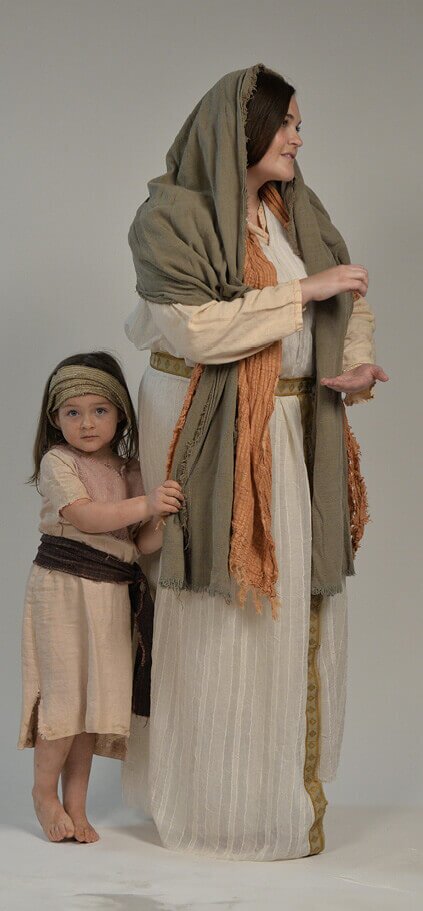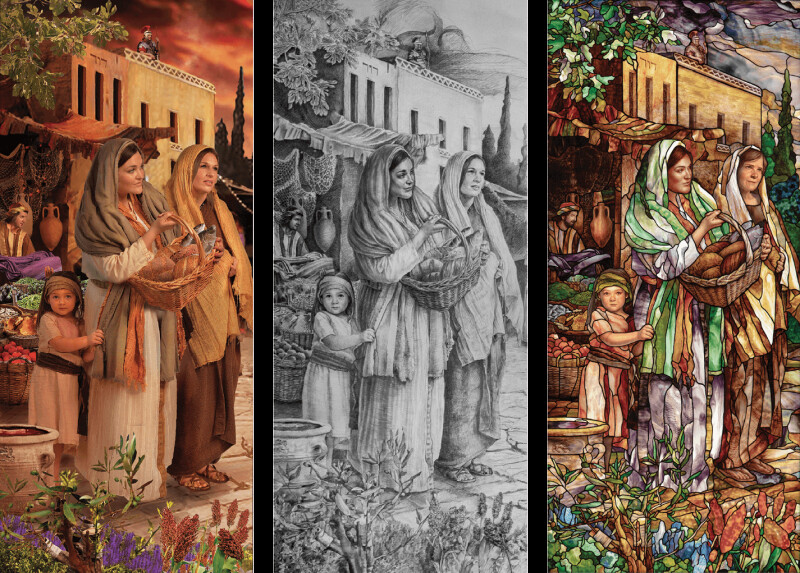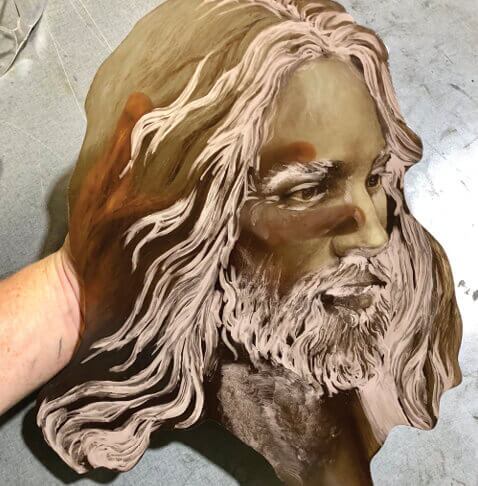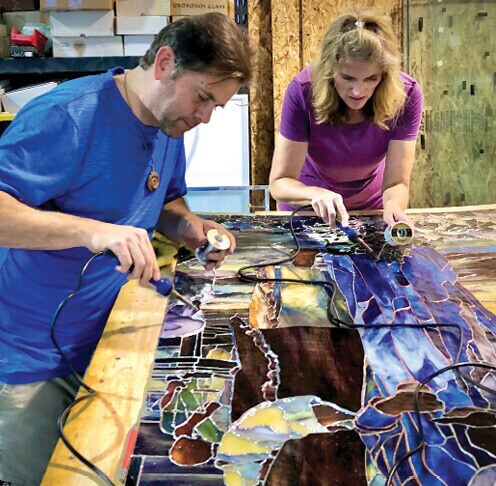When Tom Holdman was a young missionary, he received a specific piece of revelation from God: he needed to pursue a career in stained glass. He was surprised at the specificity of this prompting but was determined to follow through. So, when he returned home from his mission, Tom began learning how to work with glass and set up a workshop in his parents’ garage.
Now, over three decades later, he and his wife, Gayle, run Holdman Studios together and lead a team of 150 artists to create gorgeously intricate stained-glass art. Temples worldwide feature the Holdmans’ windows.
After completing a five-panel stained-glass window of Christ’s ministry for the Rome Temple Visitors’ Center, Tom and Gayle felt impressed to create a portable, expanded version of the window to include the ministry of the original Apostles. Titled “Believe in Him,” this piece has been displayed in France, England, and Washington D.C. and viewed by thousands of people from around the world. The Holdmans also recently released a beautiful book by the same name that details the meaning and creation of the window.
The piece is breathtaking in itself, but one thing about it is particularly remarkable: the faces.
How Do You Make a Stained-Glass Face?
At first glance, the faces on the window, including those of Jesus and the Apostles, look like photographs, and upon even closer inspection, they remain strikingly realistic.
Achieving this level of detail in a piece of glass is no small feat.
To begin, the artists arrange live models in costumes and take hundreds of reference photos of them acting out a scene. The models are told who they represent, where they would be standing in reference to the Savior, and maybe some of the thoughts that would be going through their minds.

“Their faces are the most important part because we want to capture how their character feels about Christ,” Tom Holdman explains.
After finishing the photoshoots, the artists comb through the hundreds of photographs, choosing the images that best convey the emotion of a scene and keep Jesus as the focal point.
Next, the artists digitally add dark lines to the images, a painstaking process to indicate where the lead will seal the glass pieces together. They then draw detailed sketches to determine the light and dark value of the glass before combining the sketches and digital renderings to create a pattern. This pattern provides the exact dimensions for where each piece of glass needs to be cut either by hand or with a water-jet machine.

The artists then hand-select and cut the pieces of glass, searching for the perfect colors and textures. But for body parts showing skin (like hands, faces, and feet), the glass needs to be painted with a mix of oil, water, vinegar, and powdered paint. After these “skin sheets” have been painted, the artists use tiny brushes (some with only one bristle) to carefully remove the paint where light needs to come through. The photo-realistic nature of the faces is due to the precision of this removal. At this point in the process, the pieces look like photo negatives.

The painted glass is then individually fired at 1200 degrees Fahrenheit, which melts the paint into the main sheet. All the pieces are then leaded together and cleaned. As the final step, a clear protective glass is placed over the entire window.

A Process That Reflects God’s Plan
Creating stained glass is often a spiritual experience for the Holdmans. Gayle recalls an impression she had decades ago when she was just beginning to work with Tom in his studio:
“I remember looking at a piece we were building. I saw the pattern on the table and the pieces that were filled in so far. I had a piece in my hand, and I just thought, ‘Wow. This is really like us as human beings, specifically as children of God.’
“As [stained-glass] artists, we know and number every piece. We pick it specifically; we choose it for what characteristics it has and where it’s going to be in the window. We know exactly which piece it is and why it’s there. The Spirit said to me, ‘That’s exactly how our Heavenly Father feels about each of us.’”
Gayle has come to see God as the ultimate artist. As Elder Ronald A. Rasband said, “The Lord’s hand is guiding you. By ‘divine design,’ He is in the small details of your life as well as the major milestones.”
“He knows everything about us, everything about our personality,” Gayle says. “He understands our characteristics, our joys, our sorrows, and He … has [given us] this beautiful place in His plan if we’ll step in and take that place in trust.”
“Believe in Him” will be on display at the Washington D.C. Temple Visitors’ Center through the end of August 2025.
More articles for you:
▶ Watch: BYU–Hawaii hula dancer performs with choir at Carnegie Hall
▶ I saw an ad for the Church on TV. Calling the number on the screen changed my life
▶ What to do if your spouse questions the Church: One husband’s inspiring approach



